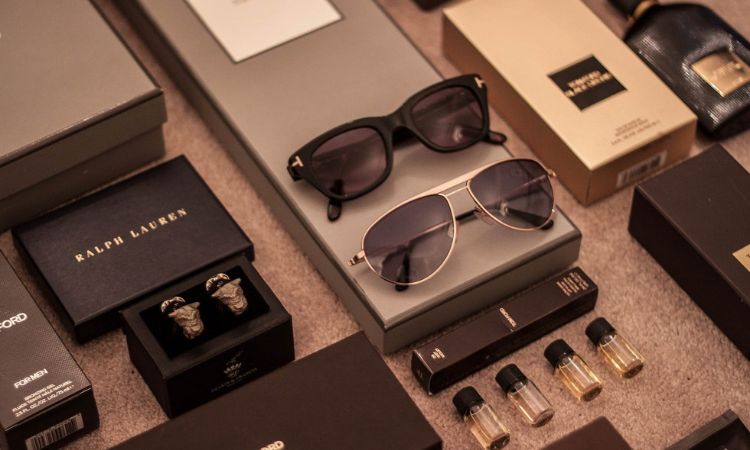
The Asia Pacific luxury goods market size reached USD 106.5 billion in 2023. The market is expected to grow at a CAGR of 3.32% between 2024 and 2032, reaching USD 142.9 billion by 2032. This remarkable growth highlights the increasing demand for luxury goods in the region, driven by rising disposable incomes, urbanization, and a growing middle class. This blog post will delve into the detailed analysis of the market, covering various aspects such as product types, end uses, distribution channels, regional insights, market dynamics, and competitive landscape.
Market Overview
Luxury goods encompass a wide range of high-end products that signify prestige and exclusivity. These products are often associated with superior quality, craftsmanship, and brand heritage. The Asia Pacific luxury goods market has seen substantial growth, fueled by the economic expansion and changing consumer preferences in countries like China, Japan, India, and South Korea.
In 2023, the market reached a significant milestone of USD 106.5 billion. With a projected CAGR of 3.32% from 2024 to 2032, the market is poised to reach USD 142.9 billion by 2032. Key factors driving this growth include increased consumer spending on luxury items, the influence of social media and celebrities, and the rise of e-commerce platforms.
Market Segmentation
By Product Type
- Watches and Jewellery:
- These items are symbols of status and wealth. Renowned brands like Rolex, Cartier, and Tiffany & Co. dominate this segment.
- Perfumes and Cosmetics:
- High-end fragrances and beauty products from brands like Chanel, Dior, and Estée Lauder are highly sought after.
- Clothing:
- Luxury fashion houses such as Gucci, Louis Vuitton, and Prada cater to the fashion-conscious elite.
- Bags/Purse:
- Iconic brands like Hermès, Louis Vuitton, and Chanel lead the market with their exclusive designs.
- Others:
- This category includes luxury automobiles, accessories, and home décor items.
By End Use
- Women:
- Women are the primary consumers of luxury goods, driving significant demand in categories like cosmetics, clothing, and jewellery.
- Men:
- There is a growing market for men’s luxury goods, including watches, fashion, and grooming products.
By Distribution Channel
- Offline:
- Brick-and-mortar stores, including flagship stores and boutiques, continue to be popular for the tactile experience they offer.
- Online:
- E-commerce platforms have revolutionized the luxury goods market, offering convenience and a wider reach.
Regional Analysis
The Asia Pacific region is diverse, with varying consumer behaviors and market dynamics across countries. Here’s a closer look at some key markets:
- China:
- China is the largest market for luxury goods in the Asia Pacific region. Rapid urbanization, a growing middle class, and increasing digital connectivity have propelled market growth.
- Japan:
- Known for its affluent population and love for high-quality products, Japan remains a significant market for luxury goods.
- India:
- With rising disposable incomes and a burgeoning middle class, India is emerging as a key market for luxury brands.
- South Korea:
- South Korea’s luxury market is driven by its fashion-forward population and strong influence of K-pop culture.
Market Dynamics
SWOT Analysis
- Strengths:
- Strong brand equity and loyal customer base.
- High-profit margins and growth potential.
- Weaknesses:
- High reliance on economic stability.
- Vulnerability to counterfeit products.
- Opportunities:
- Expansion into emerging markets.
- Adoption of digital transformation strategies.
- Threats:
- Economic downturns and geopolitical tensions.
- Changing consumer preferences towards sustainable and ethical products.
Porter’s Five Forces Analysis
- Threat of New Entrants:
- High barriers to entry due to brand loyalty and high capital investment.
- Bargaining Power of Suppliers:
- Limited due to the availability of multiple suppliers.
- Bargaining Power of Buyers:
- High, as consumers demand high-quality and exclusive products.
- Threat of Substitute Products:
- Low, given the unique value proposition of luxury goods.
- Industry Rivalry:
- Intense competition among established brands.
Competitive Landscape
Major players in the Asia Pacific luxury goods market include:
- LVMH (Louis Vuitton Moët Hennessy):
- A leading conglomerate with a diverse portfolio of luxury brands.
- Kering:
- Known for brands like Gucci and Saint Laurent.
- Richemont:
- Specializes in luxury watches and jewellery with brands like Cartier and Van Cleef & Arpels.
- Estée Lauder Companies:
- A dominant player in the luxury cosmetics and skincare market.
- Chanel:
- Renowned for its fashion, fragrance, and beauty products.
These companies continuously innovate and adapt to changing consumer preferences, leveraging digital platforms to enhance customer engagement.
Key Trends and Developments
- Digital Transformation:
- The rise of e-commerce and social media has revolutionized the way luxury brands interact with consumers. Virtual showrooms, online exclusive launches, and influencer marketing are becoming mainstream.
- Sustainability:
- Consumers are increasingly demanding sustainable and ethical products. Brands are adopting eco-friendly practices and transparent supply chains.
- Personalization:
- Luxury brands are offering personalized products and services to cater to the unique preferences of individual consumers.
Market Challenges
Despite the promising growth, the luxury goods market faces several challenges:
- Economic Uncertainty:
- Fluctuating economic conditions can impact consumer spending on luxury goods.
- Counterfeiting:
- The proliferation of counterfeit products poses a significant threat to the market.
- Regulatory Issues:
- Navigating diverse regulatory environments across countries can be challenging for luxury brands.
Future Outlook
The Asia Pacific luxury goods market is poised for significant growth over the next decade. The increasing adoption of digital technologies, expansion into emerging markets, and focus on sustainability will drive market growth. Brands that can adapt to changing consumer preferences and leverage digital platforms effectively will have a competitive edge.